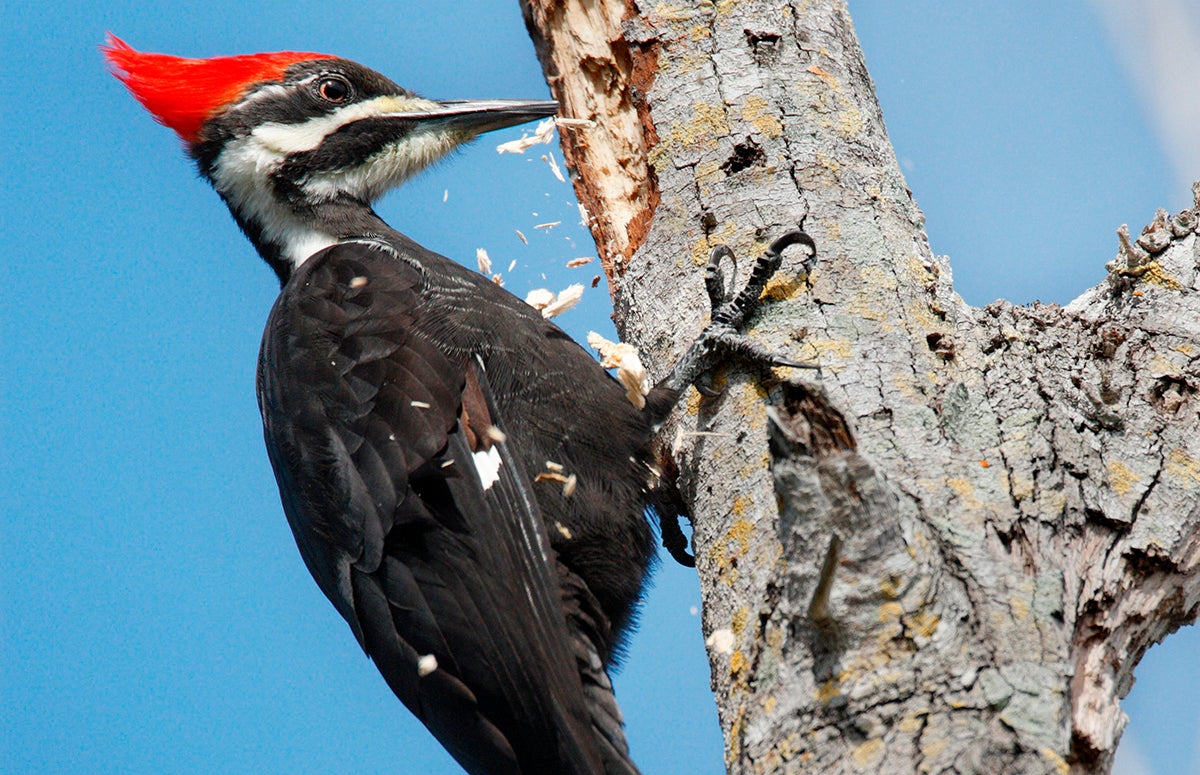Woodpeckers in Florida Population: Species Overview and Conservation
Woodpeckers in Florida Population: Species Overview and Conservation
Blog Article
Woodpeckers: A Comprehensive Guide to Understanding These Unique Birds
Woodpeckers, with their distinctive actions and physical attributes, have long captivated the inquisitiveness of ornithologists and nature fanatics alike. From their rhythmic drumming echoing via the woods to their remarkable adjustments for scaling tree trunks with simplicity, these birds present a fascinating research in avian biology. However, what absolutely sets woodpeckers apart is not simply their striking appearance yet additionally their essential role in maintaining the fragile balance of communities. As we explore the complex anatomy, diverse types, and ecological value of woodpeckers, a much deeper gratitude for these one-of-a-kind birds and the secrets they hold unravels.

Woodpeckers' Drumming Behavior
Woodpeckers exhibit a balanced and exact drumming habits that serves various essential features in their day-to-day lives. This habits is mainly connected with interaction, area defense, and foraging. The distinctive drumming audio is produced by the rapid pecking of their beaks versus tough surfaces such as tree trunks, branches, or even steel items.
Communication is a critical element of woodpecker behavior, and drumming plays a significant function in this process. Woodpeckers make use of drumming to develop their presence, bring in companions, and keep call with their companions and offspring. The regularity, intensity, and period of drumming sequences share certain messages to other woodpeckers in the location.
In addition to interaction, woodpeckers use drumming actions for area protection. Woodpeckers in Florida. The loud and repeated drumming acts as an alerting to potential trespassers, signaling that the area is currently declared. By developing their territory via drumming, woodpeckers reduce the chance of conflicts over useful resources such as food and nesting sites
In addition, woodpeckers likewise use drumming as a foraging technique. The balanced pecking aids them locate bugs concealing below the bark of trees by developing resonances that interrupt the target's concealment. This habits showcases the flexibility and ingenuity of woodpeckers in utilizing their drumming skills for numerous important functions.
One-of-a-kind Adaptations for Tree Climbing
Having actually grasped the art of drumming to interact, defend area, and forage, woodpeckers have actually progressed distinct adaptations that promote their amazing climbing capabilities in their arboreal environments. Woodpeckers have zygodactyl feet, with 2 toes pointing forward and two toes pointing backward. These tail plumes provide stability and balance, allowing woodpeckers to maneuver up tree trunks with accuracy and agility.
In addition, woodpeckers have effective neck muscular tissues and a distinct head framework that aid in their climbing up capacities. Their strong neck muscular tissues allow them to rapidly eat tree bark without experiencing whiplash, while their thick head and small mind serve as shock absorbers, securing them from the effect of duplicated drumming. These adjustments collectively allow woodpeckers to browse the vertical world of trees with performance and poise.

Duty of Woodpeckers in Communities
By foraging for pests under the bark of trees, woodpeckers aid manage insect populations, avoiding break outs that could harm the total health of the woodland. Additionally, woodpeckers produce cavities in trees that offer as critical nesting websites for a range of various other bird species, advertising biodiversity within the ecological find community.
In addition, find more the drumming and articulations of woodpeckers play a vital function in communication and region facility. These noises not just serve to attract mates yet additionally help define borders in between different woodpecker areas, lowering conflicts and advertising an unified conjunction within the woodland area. Generally, the existence of woodpeckers in woodland ecological communities highlights their value as keystone varieties, affecting the characteristics and working of these habitats in diverse ways.
Composition: Specialized Beaks and Feet
In the intricate web of forest ecosystems, the specialized beaks and feet of woodpeckers are essential adjustments that enable them to meet their critical environmental functions. Woodpeckers have unique anatomical attributes that are specifically made to aid them in their foraging and nesting habits.
The most unique feature of woodpeckers is their solid, chisel-shaped beaks. These beaks are flawlessly adapted for exploration right into wood to discover bugs, larvae, and sap hidden below the bark of trees. The solid muscle mass and tough framework of their beaks permit woodpeckers to peck at a price of approximately 20 times per secondly without causing damages to their skulls.
In addition, woodpeckers have actually specialized feet that help in their acrobatic climbing capacities. Their feet have two toes aiming onward and two toes pointing backward, supplying a solid grasp on vertical surface areas (Woodpeckers in Florida). This special foot arrangement, together with tight tail feathers that work as a supportive prop, allows woodpeckers to cling to tree trunks and branches with convenience while they look for food or excavate nesting cavities
Woodpecker Species Variety
Woodpeckers are a diverse team of birds discovered throughout various communities worldwide, with over 200 known species exhibiting adjustments to various settings. Woodpeckers have actually developed to inhabit a range of settings, from woodlands and timberlands to grasslands and deserts, each providing unique difficulties that have influenced the advancement of distinct woodpecker varieties.
These adjustments allow woodpeckers to forage successfully in their corresponding environments, decreasing competitors among varieties and advertising particular niche differentiation. Furthermore, geographic isolation and historical variables have played a role in shaping the circulation and diversity of woodpecker types, leading to the wide variety of specialized adjustments seen in these fascinating birds.

Verdict
Finally, woodpeckers are fascinating birds that exhibit one-of-a-kind drumming behavior, Read More Here specialized adaptations for tree climbing, and play crucial functions in ecological communities. Their makeup, consisting of specialized beaks and feet, enables them to flourish in their atmosphere. With a varied variety of woodpecker varieties discovered worldwide, these birds are important for keeping the wellness and balance of forests and timberlands. Understanding and valuing the complexities of woodpeckers can give important insights right into the natural globe.
Report this page